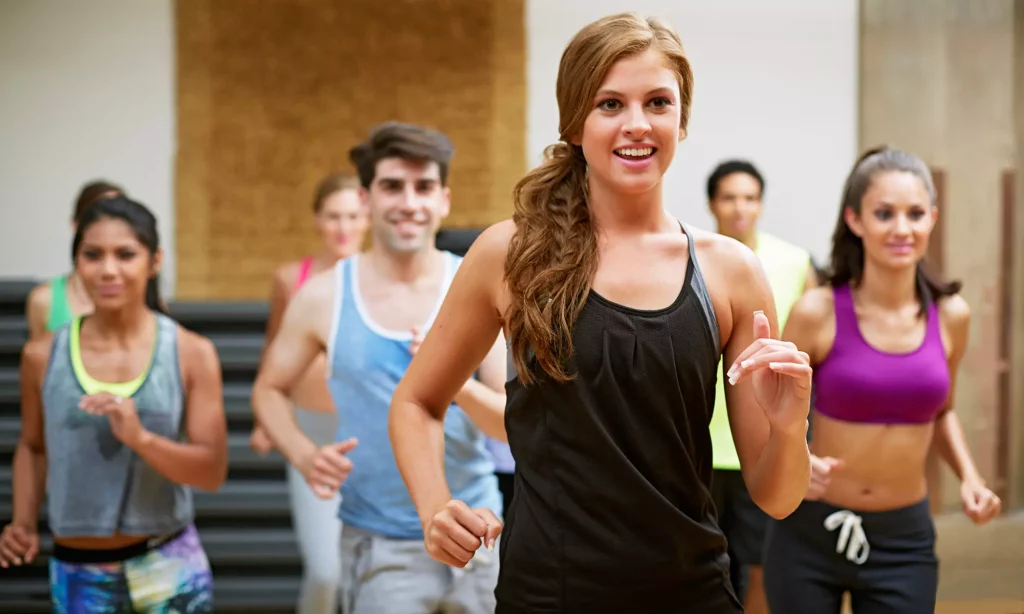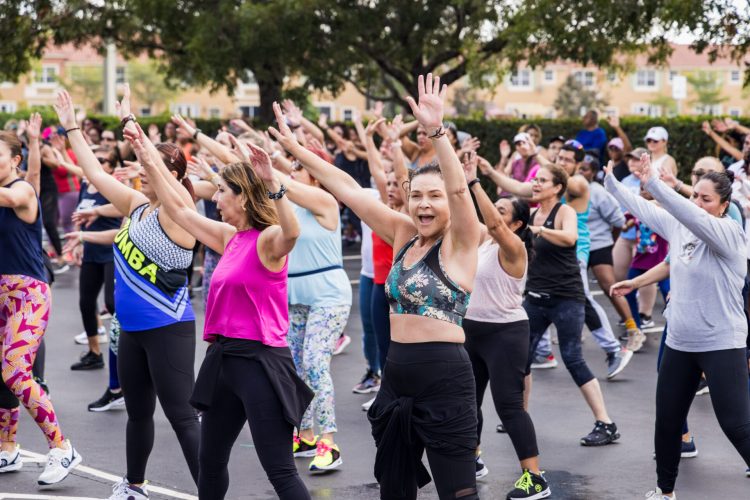Group workouts have long been celebrated for their physical benefits—toned muscles, improved cardiovascular health, enhanced flexibility—but their true power may lie well beyond the physical. In recent years, group-based fitness routines such as Zumba classes, CrossFit communities, and community bike rides have been gaining popularity not just for the sweat and gains they deliver, but for the unique way they cultivate social connection, shared accountability, and emotional resilience. As people increasingly seek meaningful relationships and healthier lifestyles in an era marked by digital disconnection and stress, group workouts offer more than a fitness fix—they offer a pathway to holistic well-being. But how exactly do these shared sweat sessions foster deeper human bonds and mutual motivation? And can moving together help us live fuller, more connected lives?
The Psychology Behind Moving in Sync
There’s something inherently powerful about moving in unison with others. Scientific studies in the fields of psychology and neuroscience have found that synchronized movement can foster a sense of unity, empathy, and trust. Whether it’s rowing in rhythm, dancing in step, or lifting to a shared beat, the act of performing the same physical task at the same time triggers a psychological phenomenon known as “self-other merging.” This lowers social barriers and creates a stronger sense of belonging. In group workouts, this synchronization plays out vividly—think of a room pulsing with the energy of a Zumba class or a cycling peloton breathing in harmony. It’s not just about following the same instructor; it’s about sharing the same purpose, tempo, and drive. This shared rhythm becomes a bonding agent, promoting not only social cohesion but a collective emotional high.
Zumba: The Joy of Movement and Expression
Zumba, the Latin-inspired dance fitness program, is more than just a workout—it’s a celebration. With its vibrant music, expressive moves, and nonjudgmental environment, Zumba classes create a joyful atmosphere where participants of all ages and fitness levels can thrive. The inclusive nature of Zumba is a key factor in its community-building power. Unlike some fitness formats that emphasize perfection or competition, Zumba encourages personal expression, cultural celebration, and pure fun. Participants often describe feeling “part of a family” after just a few sessions. The communal aspect deepens as regular attendees get to know each other, dance side by side, and support each other through physical and emotional highs and lows. In many communities, Zumba classes have evolved into social hubs where people connect, build friendships, and find emotional refuge—all while burning calories.
CrossFit: The Brotherhood of the Barbell
On the other end of the intensity spectrum lies CrossFit, a high-intensity functional training program known for its demanding workouts and fiercely loyal community. What sets CrossFit apart isn’t just its focus on strength, agility, and endurance—it’s the “box culture” that develops within each gym. In CrossFit boxes (as the gyms are known), members often refer to each other as “family,” bound by a shared commitment to self-improvement and mutual encouragement. Every workout is a test, and the challenge is never faced alone. Participants cheer each other on, celebrate personal records, and support those who struggle. It’s common to see high-fives, group huddles, and post-WOD (Workout of the Day) bonding over coffee or smoothies. This tight-knit community transforms exercise into a shared mission. The CrossFit ethos of “no one left behind” reinforces emotional resilience and mutual respect, proving that lifting others can be just as powerful as lifting weights.

Community Bike Rides: Pedaling Towards Connection
Cycling is often seen as a solitary sport, but community bike rides have shifted that narrative. Organized rides—ranging from citywide cycling events to weekly neighborhood loops—bring together riders of various backgrounds, ages, and skill levels. These rides foster a strong sense of camaraderie through shared routes, road challenges, and the quiet conversations that happen between miles. There’s something uniquely bonding about facing wind, weather, and terrain together. Group rides also promote inclusivity, offering different pace groups and skill-based cohorts that make it easier for newcomers to join. Beyond the physical benefits, these rides serve as moving social platforms—spaces where ideas are shared, friendships are formed, and collective energy powers the group forward. In cities plagued by social isolation and fast-paced lifestyles, cycling clubs and community rides offer a slower, more intentional way to connect.
Mutual Motivation: The Secret Ingredient
One of the greatest advantages of group workouts is mutual motivation. When you show up for yourself, you’re likely to quit early. When you show up for others, you push further. Group workouts leverage positive peer pressure—participants feel more committed when they know others are counting on them. This dynamic creates accountability that fuels consistency. It’s easier to roll out of bed for an early bootcamp when your workout buddy texts “See you there?” It’s harder to skip a rep when your team is cheering you on. Studies have shown that people who exercise in groups are more likely to stick to fitness routines than those who go solo. The shared struggle and triumph build emotional momentum, making every milestone feel like a collective win. In this way, group fitness becomes not just a tool for physical progress, but a mechanism for personal discipline and mutual reinforcement.
Breaking Barriers and Building Trust
In a world divided by screens, politics, and social isolation, group workouts provide a rare and refreshing opportunity to build trust across lines of difference. Exercise becomes a universal language, transcending age, race, gender, and socioeconomic status. Inside the group setting, titles and labels disappear—everyone is simply a participant, striving for better health. This equalizing effect creates fertile ground for new relationships. You might find yourself stretching next to a retiree, lifting alongside a college student, or cycling with someone from a different cultural background. These shared experiences foster empathy and understanding. The physical vulnerability inherent in group workouts—sweating, stumbling, pushing through limits—helps participants lower emotional walls, opening the door to deeper conversations and unexpected connections.
Mental Health Benefits of Group Fitness
Beyond the physical and social benefits, group workouts offer significant mental health advantages. The structured nature of group classes provides routine, which is essential for mental well-being. The social support combats loneliness, a growing public health concern linked to depression and anxiety. The release of endorphins during exercise enhances mood, while the sense of accomplishment boosts confidence and self-esteem. But perhaps the most profound benefit is the emotional safety net these groups create. In many communities, fitness groups double as informal support groups—places where members check in on each other, share life updates, and offer encouragement during tough times. This emotional scaffolding turns group fitness into a therapeutic outlet, where the body and mind heal in tandem.
Inclusivity and Accessibility in Group Workouts
A major strength of group fitness is its adaptability to diverse populations. From wheelchair-accessible dance classes to senior-friendly aqua aerobics, group workouts are being reimagined to include people of all abilities. The format can be tailored to meet specific needs—whether through modified exercises, language interpretation, or culturally relevant music and themes. This emphasis on inclusivity ensures that everyone, regardless of background or fitness level, can participate and benefit. Many community centers now offer subsidized classes or free outdoor group workouts to remove financial barriers. The message is clear: fitness belongs to everyone, and community support makes it more attainable. By prioritizing access and diversity, group fitness expands its impact, creating a culture where health and connection are for all.
Digital Platforms and the Hybrid Group Workout
The pandemic accelerated the rise of virtual group workouts, and while in-person sessions have returned, the hybrid model is here to stay. Platforms like Zoom, Instagram Live, and fitness-specific apps now enable group classes from anywhere. These digital formats preserve the communal feel, with real-time interaction, chat features, and live feedback from instructors. Virtual workouts broaden access, allowing people in remote areas or with mobility challenges to connect with a group. Some platforms offer “buddy systems,” where participants are paired up for accountability, even if they’re oceans apart. As fitness technology evolves, we’re likely to see more innovations that blend social connection with digital convenience—from VR spin classes to AI-generated group workout plans that adapt based on collective performance. The future of group fitness is flexible, inclusive, and deeply social.
Creating Sustainable Fitness Communities
What makes a group workout stick? The answer lies in culture. Strong group fitness cultures are built on shared values—respect, encouragement, and celebration of progress over perfection. Leaders and instructors play a critical role in setting this tone. The most successful group classes prioritize community over competition, diversity over uniformity, and consistency over intensity. Events, challenges, and post-workout socials help reinforce bonds and create traditions. Many long-lasting fitness communities incorporate charitable elements, such as donation-based classes or “sweat for a cause” events, adding a layer of purpose beyond personal health. These practices turn temporary routines into lifestyle anchors. They transform gyms, parks, and studios into third spaces—places of belonging outside home and work.
Conclusion: Stronger Together, in Every Way
Group workouts are far more than fitness routines—they are catalysts for connection, support, and holistic transformation. Whether it’s dancing in a Zumba class, pushing through a CrossFit WOD, or cruising on a community bike ride, these shared experiences tap into a fundamental human need: to move together, to belong, to grow. In a fragmented world, group fitness offers a model for unity built not on ideology but on effort, rhythm, and respect. They remind us that while we can train our muscles alone, our hearts are strengthened in community. And in that sweaty, supportive space—filled with music, motion, and mutual care—we discover that we’re not just building stronger bodies. We’re building stronger lives.

















































